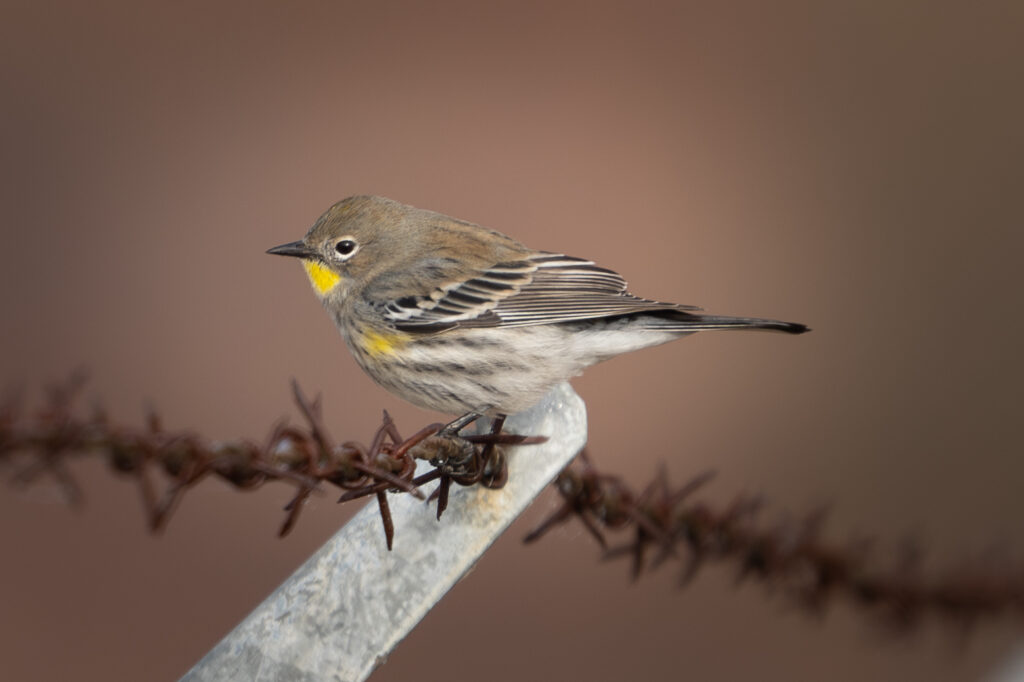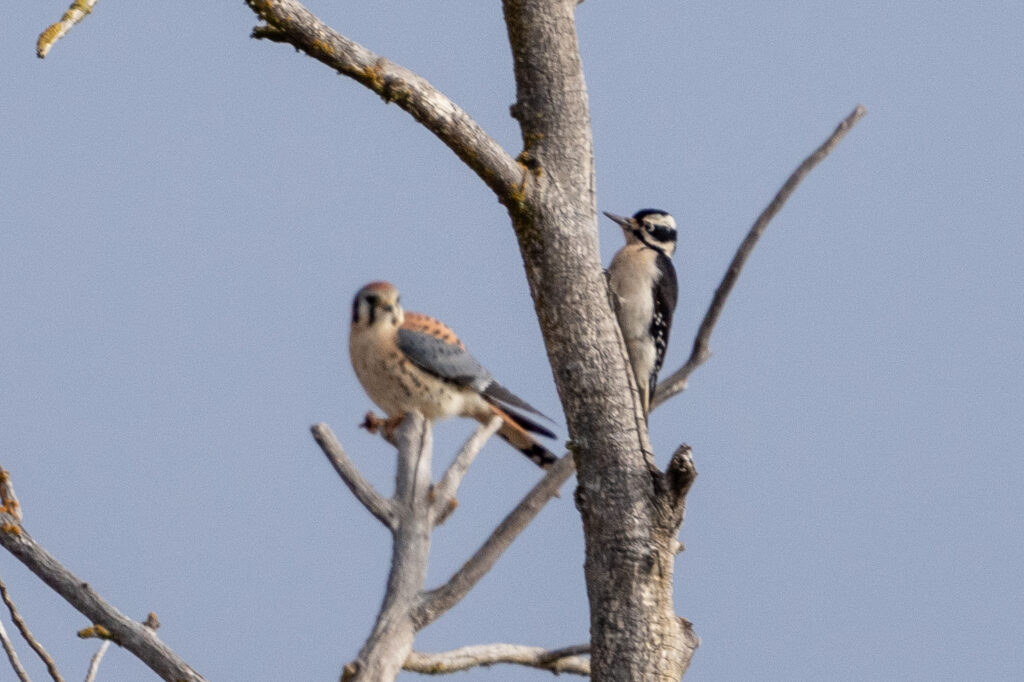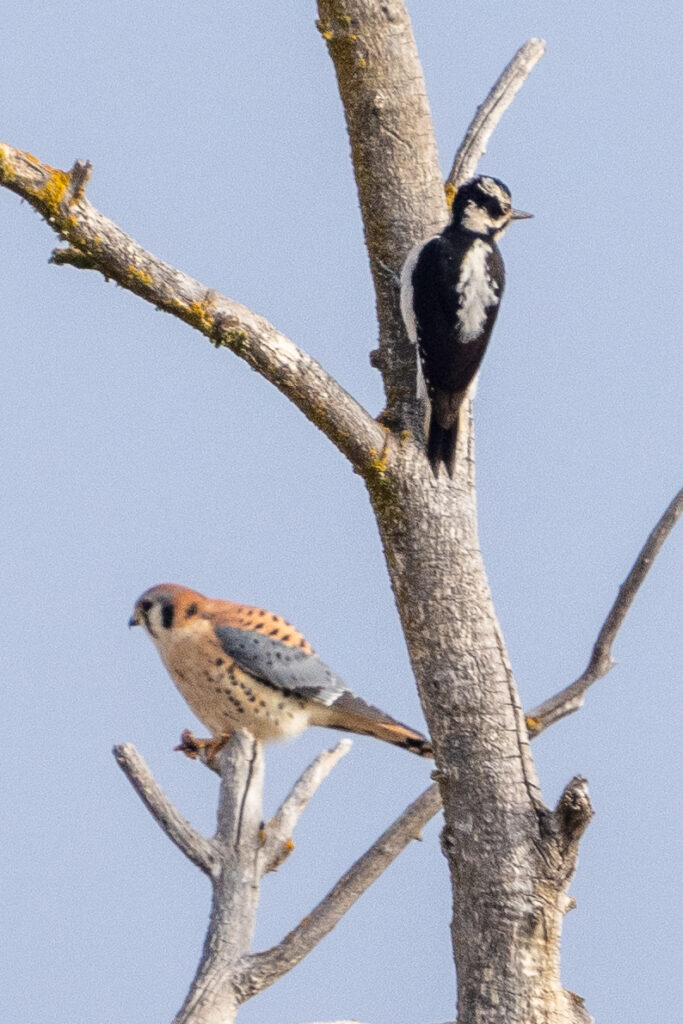The day after Thanksgiving is always fun, since many people have a day off work, and most of those people are busy shopping somewhere, leaving the natural and seminatural areas relatively sparsely populated. I always like to get out and bird on Black Friday, and in my town, it’s pretty easy to do. The Salinas River runs back behind the water treatment plant, and it’s usually a pretty productive birding site. Ducks and shorebirds flock to the ponds year-round, which attracts the natural predators of these juicy game birds, the Bald Eagle. You can usually count on at least one eagle in the snags that overlook both the river and (the main attraction for birders) the settlement ponds at the water plant; lately I often see a pair.

This pair of eagles was hanging out on its habitual snag, while hundreds of ducks and pigeons enjoyed the water in the ponds behind us. The ponds are fenced off so birders and others can’t just wander in and get hurt or damage anything. The fence line is usually pretty productive for birds as well. Today there were scores of sparrows and a couple of dozen Yellow-rumped Warblers.

The treatment plant is elevated above the floodplain of the river, so the fence along which we wander is a good twenty or thirty feet up on a berm that looks out over the ground that the trees are growing in. That means that the birds that perch in the snags of 50-foot-tall trees are only a couple dozen feet higher than we are, and some of the snags are relatively close to the fence. That can sometimes provide pretty good views of the birds, as evidenced by the image that opens this article.
The little birds are nice, and the ducks and shorebirds are fun to scope out as best you can through the fence, but the photography to that side of the fence is challenging. The birds, being no dummies, tend to hang out at the far end of the ponds, as far from the walkable fenceline as they can get, so getting good pictures of them can be quite difficult. Unless there’s a rarity and I want to get at least an image that’ll secure an ID, I don’t even try, given the limits of even a fairly large telephoto lens. (I still want to get a 600mm prime lens and a teleconverter, but, alas, I am not a billionaire.)
So instead, it’s usually best to scope out the birds on the ponds but keep your ears (and a fellow observer’s eyes, when available) on the trees behind you, where you might find American Kestrels, or Hairy Woodpeckers, or, sometimes, both in the same tree. Here’s a Hairy flying around and finding herself in the same snag as one of her likely predators, a male American Kestrel, who’s busy eating breakfast:
The kestrel stops eating, checks out the woodpecker, and then turns back to business. All is well in predator-prey land.
However, interactions between birds of prey and their potential food are not always so benign. Today, on the way out of the site, I saw a little bird run off one of its larger potential predators. People tend to think of the Bald Eagle as this big, tough bird. It has a super fierce scowl on its face all the time, and it’s got a huge hooked bill and giant talons, so it’s definitely not a predator you’d want to ignore if you’re a likely sized prey animal. That said, there’s nothing in the rule book that says prey items have to roll over and play dead, either. The feistier song birds like mockingbirds, crows, and, as you can see below, yellow-billed magpies, like to maintain a safe zone around their nesting and roosting sites, so even the big bad bald eagle sometimes finds it wiser to move on when they’re being hassled by these small fry:






















